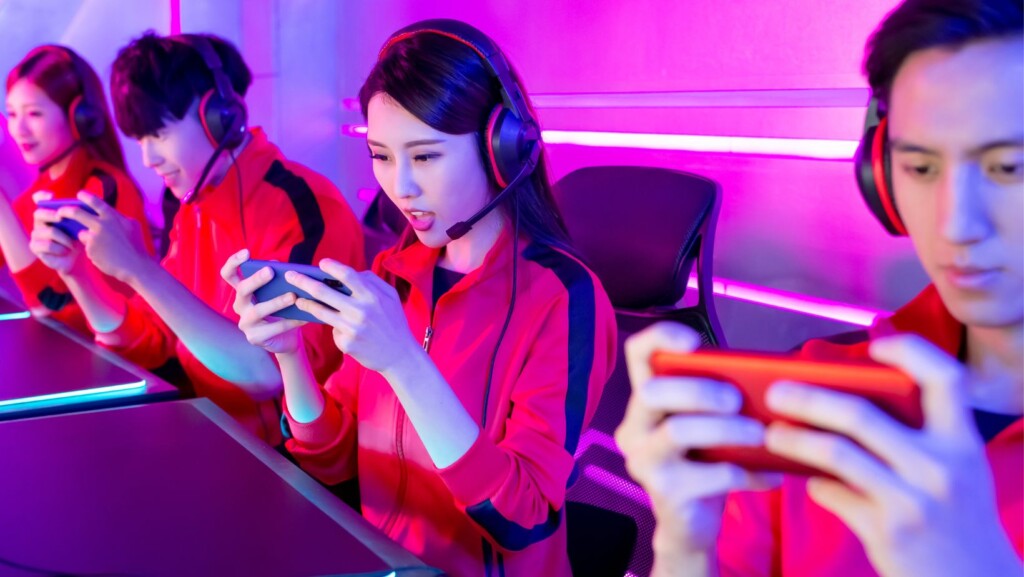Why do we often stay up late, trying to chase a new level, grinding through fights or reloading and refreshing a reward box screen? Why do these games hook us? It’s not just about an interesting story or appealing visuals, it’s all about emotional architecture. The best games skillfully guide emotions, involving you in cycles of excitement of winning, frustration of losing and recognition that is hard to ignore. You’re not just playing; you’re living the moment in the most satisfying way.
But here’s the twist, these adrenaline-fueled emotional mechanics are no longer limited to just games. But nowadays, this emotional UX is built on the psychology of risk, reward and social validation and is now considered as a universal language. From digital agencies to influencers and even the ecommerce industry, all are adopting the same psychological blueprints. We’re all playing something new, even if it doesn’t come with a controller.
The Core Emotional Loop That Makes Games Addictive
The actual secret to the addictive pull of the game is based on how emotions are guided through a repeating cycle of anticipation, action and finally reward. The emotional UX loop turns casual play into a deep engagement. This loop is a core example of the psychological design of attraction.
Understanding the Loop: Anticipation → Action → Reward
Game designers utilize a predictable but rather powerful emotional sequence for keeping players hooked for longer periods of time. It mirrors the fundamental psychological pattern that humans crave engagement and respond to it.
Anticipation (Uncertainty)
The moment before you even open a mystery box or take a shot at a new villain. You don’t know what’s going to happen, what you will do and what the results will be. That anticipation is what drives the excitement.
Action (Effort)
Once you’re in it due to the excitement, you commit to the challenge. Whether it’s navigating, aiming, shooting, clicking or solving. Your brain begins to invest emotionally and cognitively in the outcome. You try your best, using different strategies and improvising according to the scenario to get the outcome to be what you want.

Reward (Payoff)
You will either succeed or fail but the main thing is you do receive feedback. When it’s a win, the reward center lights up and you feel good and acknowledged for your win. But when it’s a close-but-not-quite the win you wanted, it actually fuels the urge to try again, try a new strategy and win.
Common In-Game Examples
- Upgrading a weapon after multiple failed attempts
- Slaying the final enemy
- Completing a tightly timed challenge for the highest level on the scoreboard
The Thrill of Mastery
Other than quick rewards, long-term engagement is dependent on progress and a sense of getting better at something:
- Leveling systems that unlock maps, new skills and story elements
- Progress bars that represent the visual satisfaction of moving forward
- Ranks and badges are socially shareable achievements that reflect status
Risk and Consequences: Why Stakes Make Everything Stick
Games become unforgettable when risk is introduced. Without something meaningful at stake, the emotional connection eventually fades. Games use high-stakes moments to create lasting engagements and even digital platforms are now adopting the same psychology to trigger the fear of missing out (FOMO).
Why Low-Stakes Environment Equal Low Emotion
In environments where there’s no real challenge or risk, people quickly disengage. If failure has no consequences and success is guaranteed, the emotional payoff collapses.
- There’s no stress or tension, so actions feel forced and mechanical
- Repetition without consequences leads to boredom
- Players don’t actually feel invested because nothing is on the line
Risk Creates Emotional Investment
Introducing stakes, even the smallest ones, transform player behavior. Whether it’s the risk of losing all the progress, losing a life or even missing a rare opportunity, risks heighten focus and emotional involvement.
- The adrenaline kick from close wheels or any escape sequences
- Anxiety when you’re about to lose at a critical moment
- Happiness when overcoming high odds
Recognition: The Social Layer That Keeps You Coming Back
The feeling of being seen and acknowledged is what keeps players (and users) coming back, beyond challenges and rewards. Social recognition, whether it’s a badge on your profile, applause from a team or just a text, taps into a deep human need for validation. Game designers understand this instinctively and now digital platforms across industries are utilizing similar social mechanics to drive engagement.
Why Social Validation Matters
Games are no longer just about the player versus the system as they’re really all about the player among others. Being recognized, ranked or simply just being acknowledged turns gameplay into an emotional experience.
- We seek affirmation; applause, ranks, likes and respect
- Recognition delivers emotional rewards stronger than points or even items
- The presence of others changes how we behave and what we value
Community as an Emotional Mechanic
In multiplayer communities or online games, recognition becomes a motivator and simultaneously a reward.
- Leaderboards rank players based on performance
- Guilds or clans form groups for collective identity and achievement
- Public achievements like pop-ups that show milestones to everyone
How Emotional UX is Moving Beyond Games
The emotional UX principles that keep us glued to games are now being adopted far beyond the gaming industry. From content monetization tools to livestreaming platforms, digital experiences are increasingly built around the same psychological loops that make games irresistible. Many key elements are borrowed from games.
Streaming Platforms
Livestreaming services like YouTube Live, Twitch and Kick mirror the emotional hooks from games, not just in terms of content but in how they feel to participate in.
- Hype cycles such as pre-announced streams or timestamps of events build anticipation
- Streamers raid other channels, creating surprise moments and even surprise moments for both viewers and creators
- Chat interactions that include polls, badges and even shoutouts to mimic feedback loops

Emotional Effect
- Viewers feel part of a live and evolving narrative
- Recognition for a donation or subscription creates personal stakes
- The unpredictability of interactions fuel dopamine bursts
Creator Platforms
Many different fan-centric platforms include spaces for influencers, musicians and VTubers now rely on emotional pacing to drive content engagement and monetization.
- Teasing or a preview of content, just enough to spark curiosity
- A period of limited access to build anticipation
- Unlocking a reward of even exclusive piece unlocked through subscription or messages
- The cycle restarts for new content, keeping engagement steady
Used On
- Subscription platforms like OnlyFans, Patreon
- Tip based interactions like Twitch extensions, Ko-fi
Platforms like OnlyMonster (https://onlymonster.ai/)are now at the fore-font of applying game-inspired emotional UX for creators. Instead of just offering automation, fan behavior is analyzed the way games analyze player actions, to make interactions strategic and emotionally timed.
We’re All Playing Something
Whether you’re grinding for XP in a dungeon or just waiting for a DM reply to unlock exclusive content, the psychology behind the engagement is all the same. Games didn’t invent emotional UX but it did perfect it. The anticipation, the stakes and the social recognition aren’t just features of gameplay anymore, they’re foundational mechanics of how we interact with digital experiences across industries. For creators, marketers, and platform designers, understanding these emotional levers isn’t optional. It’s the difference between passive and active consumption, thus, lasting connection. In the end. We’re all playing something, the only question is who’s designing the game.

